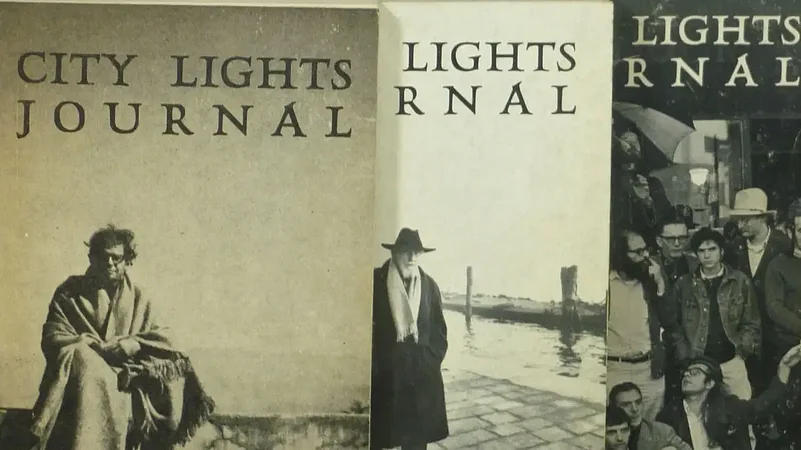Over a decade before the Pritish Nandy-edited The Vikas Book of Modern Indian Love Poetry (1979) and the Keki Daruwala-edited Two Decades of Indian Poetry: 1960-1980 (1980) brought postcolonial poetry written in a range of Indian languages before the English readership, or the speakers of other Indian languages, a 74-page compilation titled Poetry of India was published in the US, giving contemporary writers in different Indian languages a readership beyond linguistic borders. Nandy was one of the poets included in the 1968 publication. Four years later, in 1972, another publication came up in the US, titled Young Indian Poets, a 96-page publication.?
How American Little Magazines Took Contemporary Indian Poetry To US In '60s And '70s
In contrast to pre-Independence writers looking to get their work published in the UK, postcolonial writers started preferring the US.

In the early '70s, English translations of contemporary writings in Indian languages were still rare to find in India, and those available were mostly the writers’ own translations. The English language publishers in India were interested mostly in publishing Indian writers who wrote originally in English. Anthologies of Indian English writings had come up, at least three during 1972-73, but not anthologies of writings in Indian languages.?
Thanks to Beatnik poet Allen Ginsberg’s India tour during 1961-62, when he spent long hours with poets in Kolkata, Mumbai, Patna and Varanasi, translations of contemporary Bengali poetry, chiefly those of the Hungry Generation writers, appeared in the first three issues of the iconic City Lights Journal, published by Beatnik poet and publisher Lawrence Ferlinghetti. The interest this generated in the US literary circles about contemporary Bengali literature subsequently spread to other Indian languages, as becomes evident from Howard McCord’s 1965 visit to India under the Fullbright scholarship and enrollment at the Mysore University.?

Postcolonial literature in India, those in the 1950s and the 1960s, saw three interesting trends. First, a new kind of writings challenging the predecessors appeared in all major languages – Krittibas and Hungry Generation movements in Bengali, Navya in Kannada, Nabakatha in Marathi, Nayi Kavita and Nayi Kahani in Hindi, for example. Arvind Krishna Mehrotra wrote that they were all more or less same in nature and heavily influenced by European writings and Existentialism.?
“This was a consciously modernist movement, one that broke from the classic predilections of the past and redefined the concerns of literature,” Mehrotra wrote in A History of Indian Literature in English (2003), “From Hindi to Kannada, Tamil to Bengali, younger writers ‘killed their fathers’ with a vigorous new prose.”?
The second changing trend was that while writers during the colonial period were more keen on their translations of their works published from the UK, the postcolonial writers were keener on getting them published in the US. The third trend was the emergence of the little magazine movement in all these regional literature.?
Under these circumstances, Ginsberg’s trip played the bridge. In fact, it was Ginsberg’s letters from India to Ferlinghetti that prompted him to launch a new annual journal. In 1963, he wrote to Ginsberg in India, “I have just been prodded by your India descriptions to start another Journal and publish your description in it, along with anything else you send.”
After the first issue of City Lights Journal (1963) published parts of Ginsberg’s India journal, Gary Snyder’s prose A Journey from Rishikesh to Hardwar’ and the manifesto of Bengal’s Hungry Generation Movement, the second issue of the journal published extensive translations of both Krittibas group of writers and the Hungrialists, under the heading ‘A Few Bengali Poets.’ The third volume (1966) also included writings from Bengal, as well as a piece by McCord on the Hungrialists.?
In fact, McCord in his piece said that it was the journal’s 1963 edition that generated interest in the US about new Indian writings, especially those in Bengali. By 1967, Salted Feathers had published a whole issue titled ‘Hungry!’?
Coming back to the 1968 publication, Intrepid was a small press, part of the American ‘little magazines’. German writer-translator Carl Weisner, who was a close associate of the Beat generation writers, was the editor of that particular issue. More than half of the issue were translations of the works of Bengal’s Hungry Generation and the Krittibas group of writers, and the rest was titled as “Poets from Delhi, Bombay and Allahabad.”?
The second half included the works of Arvind Krishna Mehrotra, Kamla Das, Pavankumar Jain, Arun Kolatkar, Dilip Chitre, Ashok Chopra, Pritish Nandy, Rabindra Nath Gupta, Shyam Parmar and Satish Jamali. Some of these poems were originally written in English. The Bengali section included the works of Malay Roy Choudhury, Subo Acharya, Pradip Choudhuri, Saileshwar Ghosh, Subhas Ghose, Debi Ray, Subimal Basak of the Hungry Generation and Sunil Gangopadhyay, Tarapada Roy, Shakti Chattopadhyay and Shankar Chattopadhyay of the Krittibas group.
It Included Mehrotra’s Bharatmata: A Prayer, Pavankumar Jain’s self-translated Gujarati poem The Moon, Dilip Chitre’s translation of Kolatkar’s untitled work, Ashok Chopra’s Birth of a Bed from ‘Town Poems’, Pritish Nandy’s Gemara and Herod & I, Chitre’s The First Five Breakfasts Towards Self-Realisation, Kamala Das’ Convicts and The Descendants, Rabindra Nath Gupta’s All Flesh, Shyam Parmar’s Snake Harvests and Satish Jamali’s ‘anti-poems’

Most of them translated their works themselves and some (mostly Bengalis) in collaboration with Weisner and American poet Michael Aldrich, also one who had been associated with the Beats. The collection, interestingly, offers in the appendix the corresponding addresses of all Indian writers, with Weisner commenting in his introduction that “Indian poets crave contacts with poets and editors in the States” and that “they would like to exchange their publications with magazines in America.”?
In fact, such collaboration between the Indian and American little magazines had already started taking place, with Mehtrora’s magazine, Ezra, publishing McCord’s poem in its third volume (1968). Subsequently, Mehrotra and McCord had exhaustive exchanges between them, which are now part of archival collections in the US.?
McCord’s proximity with the Hungry writers and with other regional writers through Mehrotra culminated in his 1972 publication, Young Poets of India, from his own The Tribal Press, in the third volume of the magazine Measure. This again, offered a broad view of contemporary Indian poetry, with most of the writers mentioned above finding their works included.?
By the time the David Cevet-edited, The Shell alld the Rain: Poems from New India, was published from London by Allen & Unwin, it was 1973.
- Previous Story
 Elections 2024: Ashok Tanwar Joins Congress Again; Sehwag Endorses Congress Candidate In Haryana
Elections 2024: Ashok Tanwar Joins Congress Again; Sehwag Endorses Congress Candidate In Haryana - Next Story
























